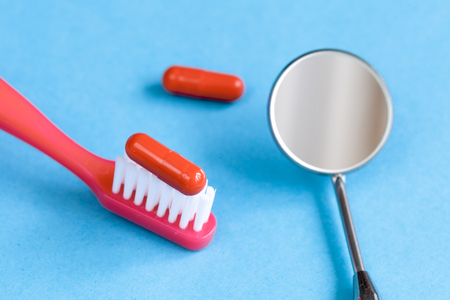Understanding Preventive Care
When it comes to dental and vision health, preventive care is a concept that often gets overlooked, especially by those of us who are new to managing our own healthcare in the United States. Preventive care refers to the regular check-ups, cleanings, screenings, and treatments that are designed to catch potential issues early—before they become bigger and more expensive problems. In dental care, this includes routine teeth cleanings, fluoride treatments, sealants, and x-rays. For vision health, preventive care covers regular eye exams, screenings for conditions like glaucoma or macular degeneration, and updating your prescription for glasses or contact lenses.
This kind of care is different from emergency or corrective care. Emergency care happens when you have an urgent issue—like a sudden toothache or an eye injury—that needs immediate attention. Corrective care involves fixing existing problems, such as getting a cavity filled or cataract surgery. Preventive care is all about stopping these problems before they start. By focusing on prevention, you can avoid discomfort, save money in the long run, and keep your smile and eyesight healthy as you get older.
2. Common Preventive Services in Dental and Vision Plans
When it comes to protecting your smile and eyesight, preventive care is at the heart of most dental and vision insurance plans in the United States. These services are designed not only to keep your teeth and eyes healthy, but also to catch potential problems early before they become more serious—and expensive—to treat. If you’re new to dental and vision coverage, understanding what’s included as preventive care can help you make the most of your benefits and stay on top of your health.
Typical Preventive Dental Services
Dental plans in the U.S. usually cover a variety of routine preventive services. Here’s a quick overview:
| Service | Description | How Often? |
|---|---|---|
| Dental Cleanings | Professional cleaning by a hygienist to remove plaque and tartar buildup. | Every 6 months (twice a year) |
| Exams | A dentist checks for cavities, gum disease, and other oral health issues. | Every 6 months (twice a year) |
| Fluoride Treatments | A protective mineral treatment that helps prevent tooth decay, especially for children. | Once or twice a year, depending on age and risk factors |
| X-rays | Pictures of your teeth used to spot hidden problems like cavities or impacted teeth. | Usually once a year, as needed |
Typical Preventive Vision Services
Your eyes need regular checkups too! Vision plans commonly offer these preventive services:
| Service | Description | How Often? |
|---|---|---|
| Eye Exams | A comprehensive check of your vision and eye health by an optometrist or ophthalmologist. | Once a year (annual exam) |
| Screenings for Eye Diseases | Tests for conditions like glaucoma, cataracts, and macular degeneration. | As part of annual exam, especially important as you age |
| Pediatric Vision Screenings | Special eye checks for children to ensure their vision is developing properly. | Typically once a year, or as recommended by a pediatrician or eye doctor |
The Bottom Line: Prevention is Key!
The real value of these preventive services lies in their ability to detect issues early—often before you notice any symptoms. Regular cleanings and exams can save you from painful dental procedures down the road, while yearly eye exams can spot changes in vision or signs of disease when they’re easiest to treat. Most American dental and vision insurance plans include these preventive services at little or no out-of-pocket cost, so taking advantage of them is both smart for your health and your wallet!
![]()
3. Benefits of Preventive Care for Long-Term Health
One of the biggest advantages of preventive care in both dental and vision coverage is its ability to catch problems before they become serious. When you go in for regular check-ups, your dentist or eye doctor can spot early signs of issues like cavities, gum disease, or even conditions such as glaucoma and diabetic retinopathy. By identifying these problems sooner rather than later, you can avoid more complicated procedures and higher medical bills down the road.
Preventive care also plays a huge role in supporting your overall health. Many people don’t realize that oral health is closely connected to the rest of your body. For example, untreated gum disease has been linked to heart disease and diabetes. Similarly, vision exams can sometimes reveal signs of other health concerns, like high blood pressure or cholesterol. By staying on top of preventive visits, you’re not just caring for your teeth or eyes—you’re looking out for your whole well-being.
For families and individuals alike, making preventive care a priority means fewer emergencies and less stress over time. It’s not just about avoiding pain or discomfort; it’s about maintaining a better quality of life. In the U.S., where healthcare costs can add up quickly, using your dental and vision insurance for routine check-ups makes smart financial sense too. Investing in preventive care now helps ensure you stay healthier—and save money—in the long run.
4. Cost Savings: Preventive Care vs. Major Treatments
When it comes to dental and vision coverage, focusing on preventive care can make a huge difference for your wallet in the long run. Many Americans may not realize just how much more affordable routine check-ups and cleanings are compared to treating major dental or vision problems down the road. By prioritizing preventive visits, you not only protect your health but also avoid the financial stress of unexpected, costly procedures.
Comparing Costs: Preventive vs. Major Treatments
Let’s take a closer look at some typical costs you might face depending on whether you stick with regular preventive care or end up needing more serious treatment later. Here’s a quick comparison:
| Type of Care | Dental Average Cost (USD) | Vision Average Cost (USD) |
|---|---|---|
| Preventive Visit (Cleaning / Eye Exam) | $75 – $200 per visit | $50 – $150 per exam |
| Cavity Filling / Basic Glasses | $150 – $350 per filling | $100 – $400 per pair |
| Root Canal / Dental Crown | $700 – $2,500 per tooth | N/A |
| Tooth Extraction / Implants | $200 – $5,000+ per procedure | N/A |
| Advanced Eye Disease Treatment (e.g., Glaucoma, Surgery) | N/A | $1,000 – $3,000+ per eye |
Why Prevention Pays Off for Americans
The numbers make it clear: if you skip preventive care, you could end up paying thousands more for major treatments that might have been avoided. Dental insurance plans in the U.S. often cover two preventive visits per year at little to no cost, while vision insurance typically covers an annual eye exam and discounts on eyewear. Taking advantage of these benefits means less out-of-pocket spending and fewer big surprises in your medical bills.
Long-Term Financial Benefits
By investing in preventive care now, you’re setting yourself up for better health and financial stability in the future. You’re less likely to need expensive procedures like root canals or eye surgeries, which not only saves money but also prevents time away from work or family due to recovery. For many American families and individuals trying to manage budgets and rising healthcare costs, making preventive care a priority is a smart move that pays off in more ways than one.
5. How Preventive Care Fits into American Health Insurance
In the United States, preventive care is a cornerstone of most dental and vision insurance plans. Insurance companies have recognized that covering preventive services—like regular checkups, cleanings, and screenings—helps catch potential health issues early before they become bigger (and more expensive) problems. As someone new to understanding insurance, I found it interesting that insurers actually encourage members to use these preventive benefits.
Most dental plans typically cover 100% of preventive visits, such as annual or biannual exams and cleanings, with no deductible or copay required. This means you can see your dentist for routine care without worrying about out-of-pocket costs. Similarly, many vision plans cover yearly eye exams and may offer discounts on lenses or frames when you get checked regularly. The goal is to remove financial barriers so people are more likely to stay on top of their oral and eye health.
Insurers view preventive care as an investment. By making it easy and affordable for Americans to access these services, they help reduce the risk of major dental work like root canals or surgeries, and serious vision problems that could require costly treatments later on. Its a win-win: policyholders maintain better health, and insurance companies avoid higher claims for advanced issues down the road.
Preventive care coverage also aligns with broader public health goals in the US. By promoting early detection and healthy habits, insurance providers play a role in reducing overall healthcare costs and improving quality of life nationwide. It’s no wonder that when shopping for dental or vision insurance here, one of the first things people look for is how comprehensive the preventive benefits are.
6. Tips for Making the Most of Your Coverage
Taking full advantage of your dental and vision coverage goes beyond just having insurance—it’s about actively using your benefits to maintain your health. Here are some practical tips for individuals and families to help you get the most out of your preventive care.
Schedule Regular Preventive Visits
Don’t wait until something hurts! Schedule routine dental cleanings and eye exams, even if you feel fine. Many insurance plans cover these preventive visits at little or no cost, so use them as an opportunity to catch problems early. Set reminders on your phone or calendar and try to book your next appointment before leaving the office.
Understand Your Benefits
Take some time to review your policy documents or log in to your insurance portal online. Know which services are fully covered, like annual cleanings, X-rays, or basic vision screenings, and what might require a copay. If you’re unsure, don’t hesitate to call customer service—they’re there to help you navigate your plan.
Use In-Network Providers
Choosing dentists and eye doctors who are in-network will usually save you money. Check with your insurance provider for a list of covered professionals in your area. This small step can make a big difference in reducing out-of-pocket costs.
Build Healthy Daily Habits
Preventive care isn’t just about appointments; it’s also about what you do every day. Brush and floss regularly, wear sunglasses outdoors, eat a balanced diet, and limit sugary snacks or drinks. Teaching kids these habits early makes a big impact on their long-term health.
Keep Good Records
Hold onto receipts and paperwork from all visits, especially if you need to submit claims or track yearly benefit limits. This helps avoid surprises and ensures you’re not missing out on any covered services.
By staying proactive—scheduling regular checkups, understanding your coverage, choosing the right providers, building healthy routines, and keeping organized—you’ll not only save money but also support a healthier future for yourself and your family.


